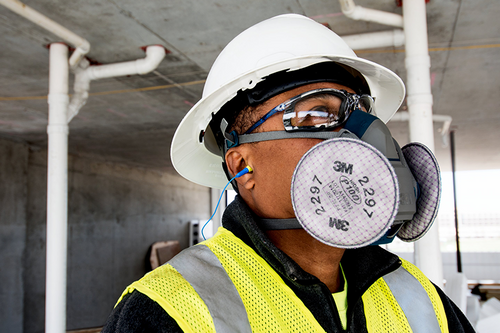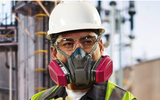2019 Silica Dust Rules and Regulations
Understanding OSHA’s Latest Silica Dust Regulations
If you work in the construction or manufacturing industries, you should be well aware of the dangers of silica dust, commonly found in plaster, drywall, heavy equipment, and other construction zones. Inhaling the dust can lead to a range of respiratory problems, including shortness of breath, chest pains, difficulty breathing, silicosis, and even lung cancer.
OSHA has set strict requirements for businesses that subject workers to these kinds of conditions. As an employer, it’s your job to make sure you monitor your workspace for silica dust and provide your employees with proper respiratory protection, so they can breathe easily. Use our guide to learn more about OSHA’s latest silica dust regulations, so you can keep your employees safe on the job.
OSHA Silica Dust Regulations for Employers
In March 2016, OSHA issued a FINAL RULE to protect American workers, limiting their exposure to respirable crystalline silica.
Final Rule’s Key Provisions:
Sets a new PEL (permissible exposure limit) for respirable crystalline silica to 50 micrograms per cubic meter of air, over an 8-hour shift, which is around half the previous PEL.
Requires employers to use engineering controls (such as water spray systems or ventilation) to limit workers exposure to the PEL; provide respirators when engineering controls are not able to eliminate exposure; limit worker access to high exposure areas; develop a written exposure control plan; and train workers on silica risks and on the ways to limit exposure.
Employers must support and provide the means for potentially highly exposed workers to obtain medical exams to monitor their health in relation to the exposure.
Understanding the Full Scope of Exposure
While the Final Rule sets a new permissible exposure limit, you need to monitor your workspace to make sure your business complies with these new regulations. First, you must monitor the work environment over the course of an 8-hour window, the typical length of a work shift, using "personal breathing zone air samples that reflect the exposures of employees on each shift, for each job classification, in each work area." To make sure the level of silica dust isn’t changing over time, you need to test your workspace again every three to six months.
But the samples you use may not be accurate in terms of what your employees are exposed to on a daily basis. That’s why it’s best to use personal sampling pumps that are fitted to each employee, so your samples are as accurate as possible. If you’re not familiar with this process, you should consider hiring a professional industrial hygienist to collect and analyze the samples for you, so you’re not putting your employees at risk.
3M Reusable Respirator Trade-In Program
3M offers a program where you can get free 3M reusable respirator facepieces in exchange for competitive facepieces and your purchase of 3M cartridges and/or filters. It's ideal for folks who frequently use filters and cartridges and want to switch products without investing in new facepieces. Learn more here.
Respirators May Not Be Enough
Some employers think that simply handing a respirator or breathing mask to their staff is enough respiratory protection from silica dust, but this isn’t always the case. Your employees come in many shapes and sizes, so you need to make sure all your respirators have been properly fitted to each employee. Women may be at risk if they wear a respirator that’s designed for a man. Men with facial hair may also be at risk if their hair creates an opening for the silica dust to slip inside.
You should also invest in high-quality respirators that keep your employees comfortable. Some masks may irritate your employees after a long shift. If these masks are uncomfortable, your employees will be less likely to wear them. Look for lightweight, compact respirators that don’t distract from the task at hand.
In addition to properly fitting your respirators to your employees, you also need to maintain this equipment over time. Make sure the HEPA filter is unclogged. Have your employees keep their respirators in a secure location when they’re not in use.
To ensure your business complies with OSHA’s new silica dust regulations, provide fitted respirators to all your employees, take accurate readings of your workspace, and monitor for silica dust on a regular basis. When in doubt, hire a professional industrial hygienist that can help you accurately monitor your work area.
You can find dozens of quality respirators and filters at PK Safety. Contact us today to find the right respiratory protection for your team.
Recent Posts
-
Hand and Eye PPE Machinists Rely On
Machining environments are inherently dangerous, with workers often surrounded by heavy machinery …Sep 18th 2024 -
Understanding Respirators With Organic Vapor Cartridges
In today’s dynamic industrial environments, several processes involve exposure to hazardous airbo …Sep 16th 2024 -
The Importance of Safety Helmets With Chin Straps: Why OSHA Prefers Them Over Hardhats
Introduction to OSHA's Helmet Safety Guidelines Head injuries in the workplace remain a serious …Sep 11th 2024





